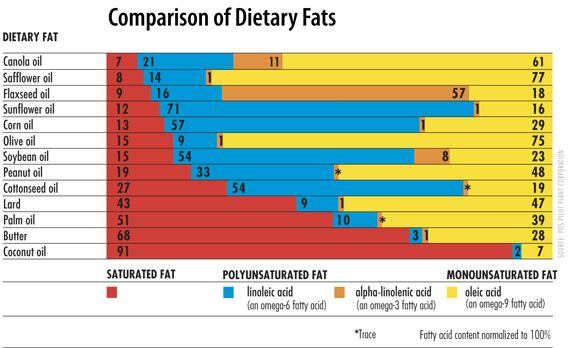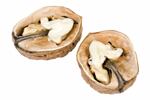According to data from a four-week randomized controlled trial presented at the American Heart Association’s EPI/NPAM 2013 Scientific Sessions in New Orleans, volunteers consuming a daily dose of canola oil (which has around 61% of the monounsaturated fat oleic acid) or high oleic canola (around 74% oleic acid) lowered their belly fat by 1.6%.
In the trial - which was jointly funded by the Canadian government, the Canola Council of Canada and Dow AgroSciences - 121 American and Canadian adults at risk for metabolic syndrome* were put on a weight maintenance, heart-healthy diet including a daily smoothie containing one of five different oils.
They were: Regular canola, high oleic canola, a flax/safflower blend, a corn/safflower blend and high-oleic canola oil enriched with the omega-3 DHA from algae. (While safflower is high in oleic acid, the flax/safflower and corn/safflower blends were low in monounsaturated fat.)
Multiple biomarkers of cardiovascular disease risk were monitored

Multiple biomarkers were measured from blood lipids to blood pressure, waist circumference, markers of endothelial function and abdominal fat, high levels of which are strongly associated with cardiovascular disease and type 2 diabetes.
After four weeks, abdominal fat was unchanged in the groups given the flax/safflower blend, corn/safflower blend, and high-oleic canola+DHA smoothies.
However, those consuming the canola or high-oleic canola smoothies lowered their belly fat by 1.6%.
1.6% reduction is ‘actually quite impressive’ in just four weeks

While this might sound like a fairly modest reduction, it is “actually quite impressive” given that the trial lasted just four weeks - one of the lead researchers, Penny Kris-Etherton, PhD, RD, professor of nutrition at the Pennsylvania State University, told FoodNavigator-USA.
“It would be interesting to see what kind of results might be achieved over a longer period of time.”
The key appeared to be the high levels of monounsaturated fatty acids (MUFAs) in the canola oils, said Dr Kris-Etherton, who acknowledged that other MUFA-rich oils including high oleic soy and olive oil - which were not included in the study in question - may well confer similar benefits.
She added: “It was beyond the scope of this study, but it would be interesting to study the other high oleic oils to see whether we see similar effects.”
Dow has seen strong sales from high oleic canola oils, while DuPont and Monsanto are both developing high oleic soybeans - oil from which is likely to hit the mass market in 2015.
Said Kris-Etherton: “I was a bit worried when I first started to hear about these new high MUFA oils as we are always talking about the benefits of polyunsaturated fatty acids (PUFAs) in particular. But now I’m encouraged by the possible health benefits.”
The take home message for consumers?

It can be confusing for consumers to make sense of recent research into healthy fats, she added, with some PR messages homing in on extra virgin olive oil - the benefits of which appeared to be conferred both by olive polyphenols and monounsaturated fats -and others focusing on canola (high in MUFAs), or walnuts - which contain several health-promoting components from antioxidants to alpha-linolenic acid.
“One day it’s olive oil, then it’s nuts, now it’s canola. So you have to be cautious as a scientist to look at exactly what might be conferring the benefits and not draw inferences about other high MUFA oils based on this study. So we need to test other high oleic oils as well in future studies.”
What’s the mechanism of action?
As for the mechanism of action, the reduction in visceral fat could be due to increased fat oxidation, she said.
“But we really don’t know.”
The as yet unpublished research - a collaboration between the University of Manitoba in Winnipeg, Pennsylvania State University, Laval University in Quebec and the University of Toronto - is likely to generate several papers, predicted Dr Kris-Etherton.
*People with high belly fat, low HDL cholesterol, above average blood sugar, blood pressure and triglycerides.
